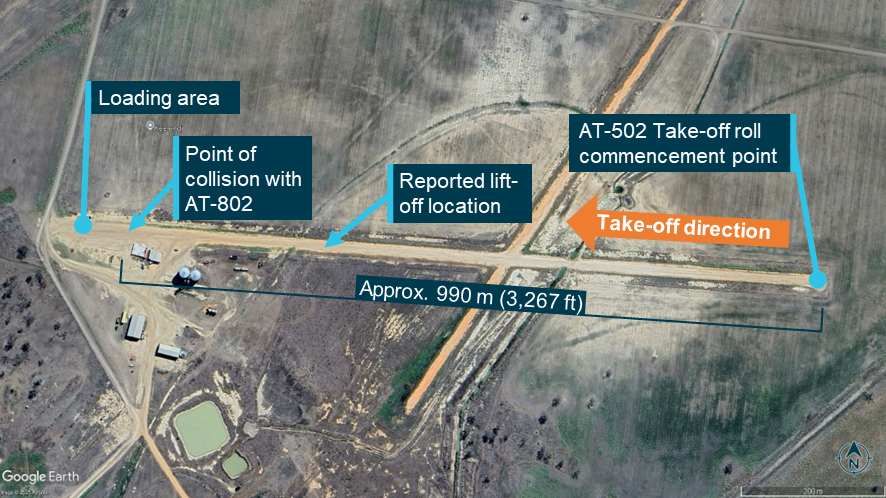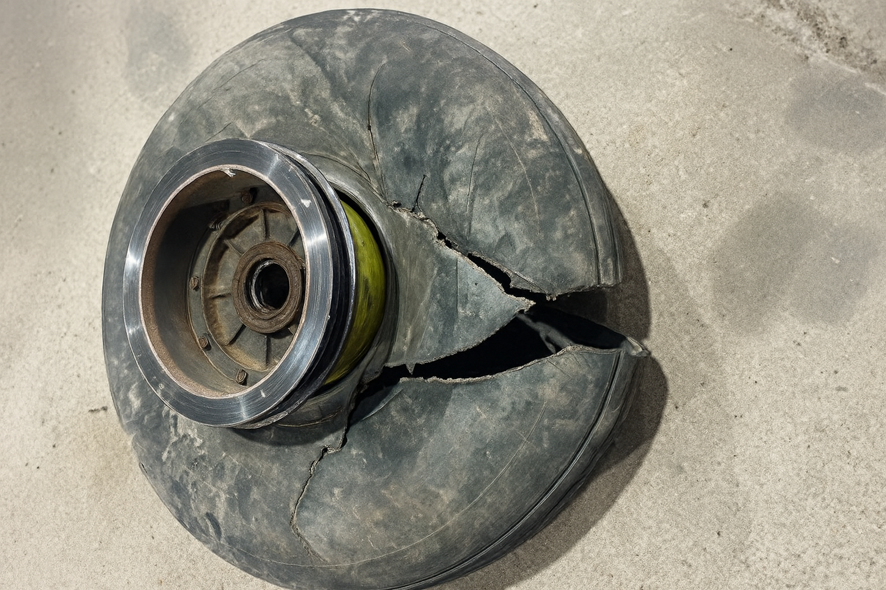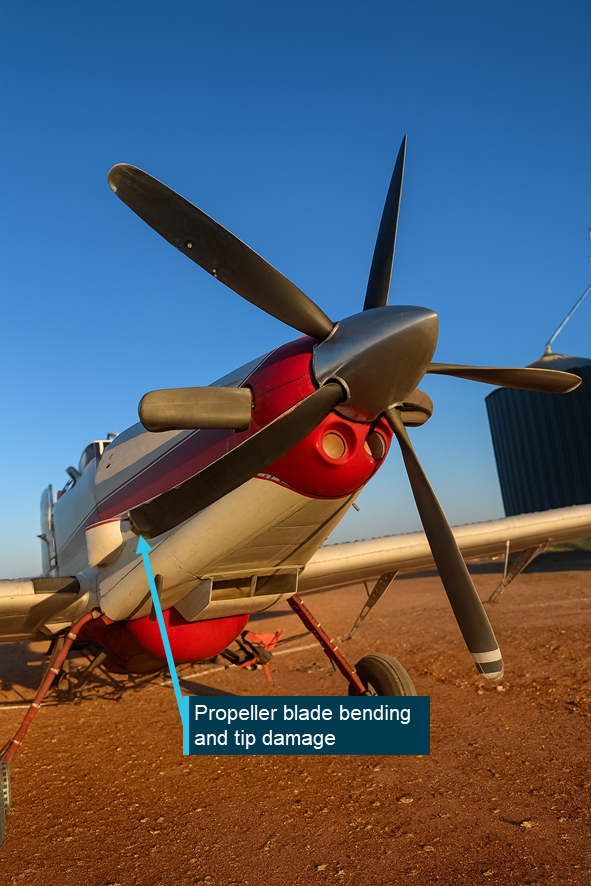What happened
On 26 September 2025, 3 agricultural aircraft were conducting aerial application operations from a private airstrip base near Pilliga, New South Wales. The operating airstrip runway was oriented east-west, with the aircraft loading area positioned at the western runway end (Figure 1). Around 1700 local time, with a westerly prevailing wind (290°/10 kt) and the sun towards the western horizon, the pilot of an Air Tractor AT-502B (AT‑502) aircraft commenced backtracking toward the eastern end of the runway for a take-off into the wind. While backtracking, the pilot received a radio call from an Air Tractor AT-802A (AT‑802) aircraft inbound from the east. The 2 pilots coordinated separation and the AT-802 landed on the runway behind the AT-502 at the eastern end of the runway and began taxiing towards the loading area.

Source: Google Earth, annotated by the ATSB with information from the operator
When the AT-502 pilot judged there was likely sufficient runway distance behind the just‑landed AT-802, they commenced the take-off run. Aircraft acceleration and take-off were described as normal and the aircraft lifted off behind and passed directly over the top of the taxiing AT-802. As it did so, the AT-502’s left main landing gear wheel struck the AT-802’s rotating propeller – slashing the main gear tyre (Figure 2) and damaging the outboard tip of one propeller blade (Figure 3).
The AT-502 pilot maintained control and, after dumping the load of chemical, they returned to the airstrip for an uneventful landing. The AT-802 pilot reported immediate and significant airframe vibrations from the damaged propeller and shut down the engine. Neither pilot sustained any injury.
The AT-502 pilot noted that the low sun angle created glare and associated visibility issues and may have affected their judgement of the distance to the taxiing aircraft in front. They also noted that the glare had caused the AT-802 pilot to taxi more slowly than expected, increasing the time needed to clear the airstrip.
Figure 2: AT-502 damaged left main landing gear tyre

Source: Operator supplied
Figure 3: AT-802 with propeller blade damage

Source: Operator supplied, annotated by the ATSB
Safety message
Pilots of aircraft operating from unlicensed and uncontrolled aircraft landing areas and aerodromes must ensure that they establish and maintain complete situational awareness. Regular visual scans, radio calls and use of positioning technology (such as ADSB-IN and OUT) can collectively enhance awareness and reduce conflict risk. In situations where these tools are absent or degraded (reduced or affected visibility, for example), procedural and operational allowances must be made to ensure that aircraft separation is always assured.

The ATSB SafetyWatch highlights the broad safety concerns that come out of our investigation findings and from the occurrence data reported to us by industry. One of the safety concerns is Reducing the collision risk around non-towered airports.
About this report
Decisions regarding whether to conduct an investigation, and the scope of an investigation, are based on many factors, including the level of safety benefit likely to be obtained from an investigation. For this occurrence, no investigation has been conducted and the ATSB did not verify the accuracy of the information. A brief description has been written using information supplied in the notification and any follow-up information in order to produce a short summary report, and allow for greater industry awareness of potential safety issues and possible safety actions.


